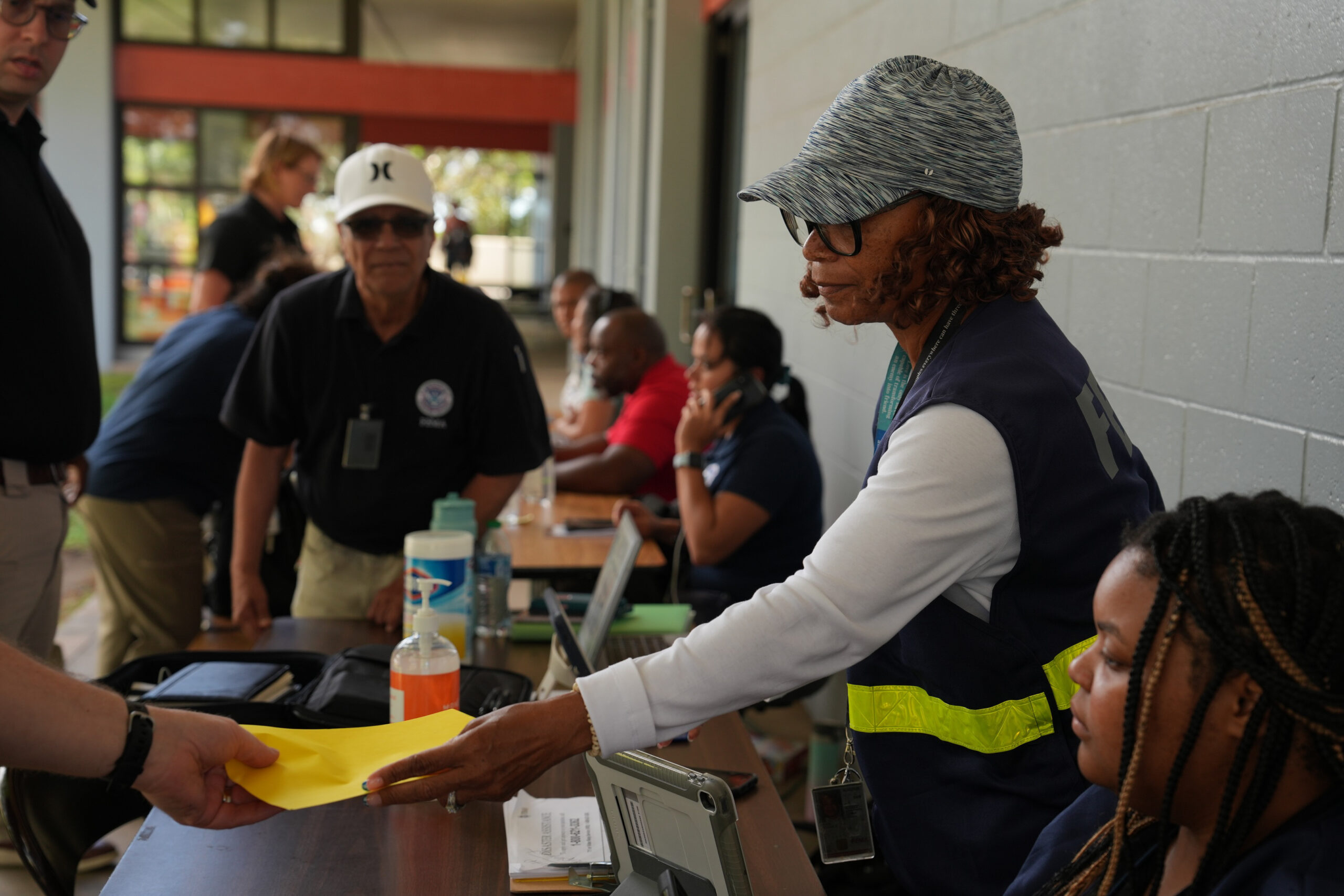What we’re watching: Weekly disaster update, March 25

We know all too well that disaster can strike anytime, anywhere in the world. Some disasters make headlines; others do not. Here at the Center for Disaster Philanthropy (CDP), we monitor the status of disasters worldwide and compile a list of the ones we’re tracking weekly, along with relevant disaster-related media coverage.
Here’s what we’re watching for the week of March 25, 2024.
New or Emerging Disasters
Earthquakes – Afghanistan: Two 5.4 magnitude earthquakes struck south Kandahar Province in Afghanistan on March 19 just hours apart. According to the U.S. Geological Survey, more than 10,000 people were exposed to strong shaking and 21,000 to moderate shaking. No further information nor the number of casualties and damages have been reported as of March 25.
Afghanistan is especially prone to earthquakes, given that it is above multiple fault lines and is where the Indian and Eurasian plates meet.
Storm – Maine: Since March 23, many northeast states have seen heavy snow and rain, leaving hundreds of thousands of residents without power. Most significantly impacted was Maine, where the heavy snow led to fallen trees and power lines, affecting more than 163,000 residents. Due to the electricity outage, the Maine Emergency Management Agency opened 14 warming centers throughout the state for those who lost power.
In some counties, over 26 inches of snow fell in addition to reports of freezing rain. At one point, more than 50 million people on the East Coast were under flood alerts amid heavy snow and rain.
Wildfires – Tibet and China: Several wildfires affected Sichuan and Yunnan Provinces in eastern Tibet and southern China. On March 18, media reports found approximately 3,300 people were evacuated, and more than 1,200 firefighters and eight helicopters were dispatched to contain the fast-moving fires, which began on March 15.
The local Ministry of Emergency Management declared a Level-4 emergency response in light of the rapidly spreading fire and dispatched an additional 750 firefighters as reinforcement. More than 10,000 hectares (24,710 acres) burned, and more than 11 Tibetan nomadic communities and villages, including monasteries and livestock, were in danger before the fires were contained on March 19.
Wildfires – Virginia and West Virginia: Since March 20, multiple wildfires, ignited during high winds, burned across Virginia, West Virginia and parts of Maryland. While some fires were contained, wildfires in the Shenandoah Valley continue to burn through thousands of acres of land. The Rocky Branch Fire, in particular, grew from 450 acres to 1,200 acres within a day and is only 10% contained as of March 24. The fires led to the shutdown of parts of the Shenandoah National Park with evacuation orders in place, school closures and damages to structures.
In West Virginia, the National Guard sent two helicopters and dropped nearly 95,000 gallons of water in particularly dry, rough and dangerous terrain on March 22.
For more, see our 2024 North American Wildfires disaster profile.
Flooding – Papua New Guinea: At least 23 people have died in Papua New Guinea due to multiple landslides triggered by heavy rainfall and flooding on March 18.
All deaths were reported in the highlands and mountains of Chimbu Province in central Papua New Guinea. High tides and severe flooding were also reported in coastal towns and cities, leaving many residents to re-open discussions of relocating their villages to higher land.
In 2023, Papua New Guinea was ranked number 12 on the list of countries with the highest disaster risk due to climate change and natural hazards by the World Risk Index.
Previous/Ongoing Disasters
Tornadoes – Ohio: The deadly March 14 tornadoes left a trail of debris and damages through multiple states. In Ohio, cleanup crews removed more than 500 tons of debris from Logan County. Emergency Management Agency officials have also begun plans to arrange temporary housing for residents whose homes have been damaged or destroyed.
Ohio Governor Mike DeWine also requested the Federal Emergency Management Agency (FEMA) to assess damages to impacted businesses and homeowners on March 21.
Unfortunately, in the immediate aftermath of the tornadoes, media outlets reported looting from damaged homes by “contractors.”
For more, see our 2024 U.S. Tornadoes disaster profile.
Tropical storm – Mozambique: Making landfall on March 14, almost exactly on the anniversary of the deadly Cyclone Freddy, Tropical Storm Filipo affected more than 48,000 people in Mozambique.
On March 22, the International Organization for Migration (IOM) reported an urgent need for food, clean water, sanitation, health and shelter after a multisectoral assessment of affected populations. The storm exacerbated existing vulnerabilities and ongoing conflict and crises, including cholera outbreaks.
Additional priorities included the reconstruction and rehabilitation of 8,000 homes and 146 school buildings.
In January 2024, humanitarian agencies sounded the alarm about a deepening humanitarian crisis due to an escalation of conflict and climate shocks. While Tropical Storm Filipo has worsened needs in the country, 465 people were displaced due to sporadic attacks and conflict between Feb. 8 and March 22.
U.S. Midwest Low Attention Disasters
The Midwest is regularly faced with low-attention disasters that affect people across the region. CDP’s Midwest Early Recovery Fund (ERF) effectively funds efforts that catalyze equitable disaster recovery.
These are some of the latest disasters and related news the ERF team is monitoring:
- More than a hundred homes were damaged in Hot Springs, Arkansas after an EF-2-rated tornado hit the town on March 14. Over half of the homes were severely damaged.
- On March 14, an EF-3 tornado struck Winchester, Indiana, destroying 22 homes and damaging 110 others. Thirty-eight people were injured, including three in critical condition. Thousands of residents also lost power in Randolph and Delaware counties.
In addition to the disasters listed above, we actively monitor the following disasters or humanitarian emergencies. For more information, see the relevant disaster profiles, which are updated regularly.
- Afghanistan Humanitarian Crisis
- Horn of Africa Hunger Crisis
- Gaza-Israeli Humanitarian Crisis
- 2024 Chile Wildfires
- 2024 Japan Earthquake
- 2023 Libya Floods
- 2023 Morocco Earthquake
- 2023 Turkey-Syria Earthquake
Complex Humanitarian Emergencies – Somalia
Many places worldwide are experiencing emergencies caused by conflict, climate change, drought, famine, economic challenges and other conditions that combine to create a complex humanitarian emergency (CHE). CDP maintains complete profiles on several CHEs, and what CDP considers Level 1 CHEs are profiled in this weekly blog post and tracked.
In 2023, Somalia faced its worst drought in decades, followed immediately by extensive floods. Severe weather incidents have resulted in significant humanitarian needs for 2024. Extreme weather conditions in 2023 drove over 4 million people into high levels of food insecurity between January and March 2024. Despite improvements, projections until June 2024 still show more than 714,000 people in emergency levels of acute food insecurity.
Recurring conflict, poor governance and disease outbreaks have also continued to exacerbate humanitarian needs in 2024. On March 21, Save the Children reported that at least 54 people died from cholera in the recent months, with nine dying in just one week. This outbreak began in January 2024, and more than 59% of the 4,388 cases are children under five.
Somalia’s ongoing civil war has exacerbated humanitarian needs. Most recently, the al-Qaueda allied group, Al-Shabaab, launched deadly attacks on a military base, leading to at least 17 casualties.
Somalia is part of the International Rescue Committee’s list of countries at risk of climate disaster and the World Food Programme’s list of countries most impacted by climate change. As a result of extreme climate events, the Humanitarian Response Plan (HRP) for 2024 has redirected its focus on life-saving, sustaining and protection response as opposed to resilience and durable solutions. As of March 25, the HRP stands at 9.8% funded out of its goal of $1.59 billion.
Upcoming webinar
April 4: A conversation for funders on reforms for disaster assistance to help survivors recover faster
 Maui, Hawaii (Aug. 14, 2023) - FEMA Disaster Survivor Assistance teams begin registering Hawaii Wildfire survivors for assistance. (FEMA photo by Dominick Del Vecchio/Released)
Maui, Hawaii (Aug. 14, 2023) - FEMA Disaster Survivor Assistance teams begin registering Hawaii Wildfire survivors for assistance. (FEMA photo by Dominick Del Vecchio/Released) What We’re Reading
- Native Hawaiians aim to bring cultural sensitivity to Maui wildfire cleanup – NPR: Over 35 native Hawaiian people, lineal Lahaina descendants, are working with archeologists to monitor burn zones. These cultural teams have been a reassuring presence for many Lahaina residents as they watch this grueling work.
- Thrive through equity: Takeaways from Dasra Philanthropy Week 2024 – Alliance: The Dasra Philanthropy Week in India saw a convergence of stakeholders from diverse sectors. With a focus on equity, gender, and diversity and inclusion, discussions ranged from topics on inclusive urbanizations to exploring solutions for underserved areas like animal welfare.
- Trend of more tornadoes, fewer basements dangerous combo for Ohioans – The Columbus Dispatch: Most recent U.S. Census Bureau’s survey data showed that new single-family homes in the Midwest were increasingly built without a basement. As the number of tornadoes in states like Ohio has increased, these new housing trends impact not just the general population but, specifically, those from poor socio-economic backgrounds.
- Weather Disasters Increase Teens’ Risk for Mental Distress, Study Finds – The Weather Channel: A study analyzed data from a survey of nearly 40,000 high school students across 14 states and found that those who live through climate disasters like hurricanes and tornados are up to 20% more likely to experience mental distress.
The kind of protector we all need in our lives. Here’s Lady Pinto Bean showing off her sword-fighting skills.
